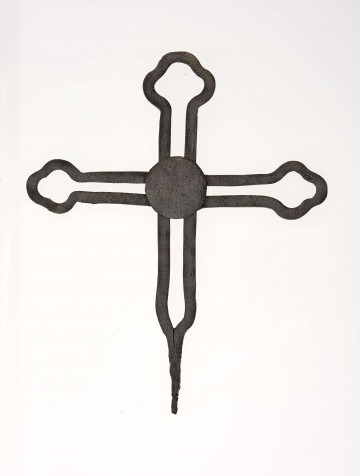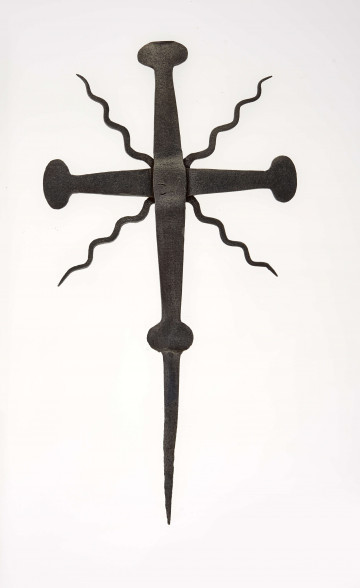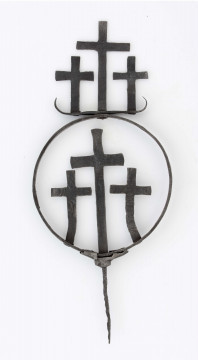
Cross
1901 — 1920
National Museum in Lublin
Part of the collection: Folk craft of the Lublin Region (19th/20th c.)
Iron crosses crowning wooden crosses or wayside shrines were rarely decorated on the surface. Visible against the sky at a considerable height, they were distinguished by their silhouette. Their makers paid special attention to the interesting solution of the end of their arms, cutting them into the shape of small crosses, lilies, triangles, leaves, trillium, circles, rhomboids or slits turned outwards. Between the arms they placed single, double, triple or even quadruple rays -. Straight or wavy, short or long, they sometimes equalled the length of the arms. They were forged from a separate piece of metal and then joined by riveting or welding directly at the crossing of the arms or attached to the centre of a circle or shield, which was probably intended to symbolise the sun.
A crescent moon was sometimes placed at the base of the cross. Such crosses, modelled on the forms of tops of towers and domes of Orthodox churches, occurred mainly in the areas of eastern and southern Lublin, where the Ukrainian population of Greek Catholic or Orthodox faith lived. The crescent symbolised the victory of Christianity over paganism. This sign was also found on flat crosses without rays, flat and contour crosses with rays, as well as with a silhouette of a rooster (see E/379/ML, E/16369/ML) or on very original openwork crosses (see E/5520/ML).
Author / creator
Dimensions
cały obiekt: height: 26 cm, width: 44 cm
Object type
cross
Technique
riveting
Material
iron
Creation time / dating
Creation / finding place
Owner
The National Museum in Lublin
Identification number
Location / status

1901 — 1920
National Museum in Lublin

1890 — 1910
National Museum in Lublin

1863 — 1868
National Museum in Lublin
DISCOVER this TOPIC
Museum of King Jan III's Palace at Wilanów
DISCOVER this PATH
Educational path